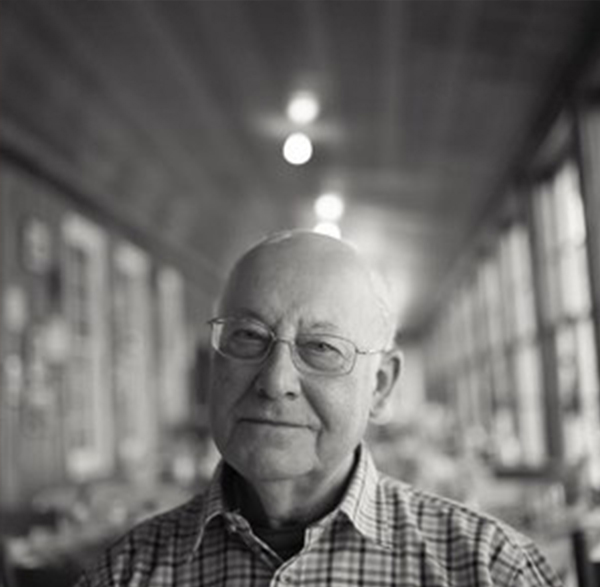


艺术家 | Artist

迈克·韦尔毕业于牛津大学化学系(1962年),他从事高分子光谱学的研究并获得了博士学位(1965年)。随后,他在科学领域开始了学术生涯,在曼彻斯特大学化学系担任讲师(1964-92);并成为特许化学家和皇家化学学会会员(1982)。他现在仍然是该大学化学系的荣誉研究员。1992年,他致力于手工印相工艺的研究,关于其科学、历史、保存和艺术性。柯达摄影助学金(1984年)支持了他对贵金属光化学印相的初步研究,这项研究被授予皇家摄影学会胡德奖章(1990年),并得到英国专业摄影师协会理查德-法兰德纪念奖(1991年)的认可,迈克·韦尔本人也是该协会的会员。
韦尔博士曾担任位于布拉德福德的国立媒体博物馆顾问,并指导硕士生的研究工作,包括维多利亚和阿尔伯特博物馆的照片修复和德比大学的手工印相工艺课程。他是德蒙福特大学新开设的摄影学硕士课程的第一位特聘考官。他被任命为华盛顿特区国家艺术馆的科学顾问(2010年),并在2016年被美国历史和艺术作品保护协会授予联合专业人员特别认可奖。
他对早期摄影化学史的研究主要是其对铁基工艺做出的创新及更为经济性的改变,涉及的铁基工艺包括铂钯印相工艺、阿盖洛法、蓝晒印相工艺和金印印相工艺。这些研究发表于七十种出版物中,既有通俗流行读物,也有学术摄影文献,其中包括六本书籍。他对早期摄影工艺演变的研究已在学术期刊《摄影史》上发表。《早期照片的图像退化机制》(1994年)和《蓝晒印相工艺:普鲁士蓝摄影印刷的历史、科学和艺术》(1999年)这两本书的主题主要关于最早的纸基照片的保存,两本书均由伦敦科学博物馆出版。他最新的专著有:《摄影术中的金及金印手册》(2006年),以及与普拉迪普·马尔德(Pradip Malde)《铂金印相:用当代印刷工艺制作照片》,由Routledge出版的Focal Press书籍(2021年)。
作为其科学和学术活动的平衡,韦尔也是一位参展的摄影师,自1981年以来,他的个人作品在英国、欧洲、美国、澳大利亚和中国的画廊中广泛展出。他在世界各地举办了手工印相工艺的专业工作坊和大师班,并在BBC电视台的开放大学系列节目《创造力的化学》(1995年)中出现。
迈克认为摄影是科学和艺术这两个分离学科的理想交汇点:他的目标是利用化学科学来加强摄影艺术的表现力,从而在这两种文化之间架起桥梁。
Mike Ware graduated in chemistry at the University of Oxford (1962), where he subsequently obtained a doctorate by research in inorgaanic molecular spectroscopy (1965). He then followed an academic career in science, as Lecturer in Chemistry at the University of Manchester (1964-92); becoming a Chartered Chemist and a Fellow of the Royal Society of Chemistry (1982). He remains an Honorary Fellow in Chemistry of the University. In 1992 he committed himself to an independent study of the science, history, conservation, and art of ‘alternative’ photographic processes. A Kodak Photographic Bursary (1984) supported his initial research into photochemical printing in noble metals, which was recognised by the award of the Hood Medal of the Royal Photographic Society (1990), of which he was a Fellow, and the Richard Farrand Memorial Award of the British Institute of Professional Photographers (1991).
Dr Ware has acted as a consultant to the National Media Museum, Bradford, and has supervised postgraduate research, both in photograph conservation at the Victoria & Albert Museum, and in alternative process chemistry at the University of Derby. He acted as the first External Examiner for the new M.A. course in Photographic Studies at De Montfort University. He was appointed as a scientific advisor to the National Gallery of Art in Washington DC (2010), and in 2016 was awarded the Special Recognition of Allied Professionals, by the American Institute for Conservation of Historic and Artistic Works.
His researches into the chemical history of early photography include his updated and economic versions of the siderotype (iron-based) processes: platinotype, palladiotype, argyrotype, cyanotype and chrysotype. These are described in seventy publications in both the popular and academic photographic literature, including six books. His studies of the evolution of early photographic processes have been published in the scholarly periodical, History of Photography. The conservation of the first photographs on paper is the subject of his books: Mechanisms of Image Deterioration in Early Photographs (1994), and Cyanotype: the History, Science and Art of Photographic Printing in Prussian Blue (1999), both published by the Science Museum, London. His latest monographs are: Gold in Photography and The Chrysotype Manual (2006), and with Pradip Malde, Platinotype: Making Photographs in Platinum and Palladium with the Contemporary Printing-out Process, a Focal Press book published by Routledge (2021).
As a counterbalance to his scientific and scholarly activity, Mike is also an exhibiting photographer, and since 1981 his personal work has been shown widely at galleries in the UK, Europe, the USA, Australia, and China. He has conducted specialist workshops and masterclasses throughout the world in alternative printing techniques, and appeared on BBC Televison in the Open University series The Chemistry of Creativity (1995).
Mike regards photography as an ideal meeting ground for the separated disciplines of science and art: his ambition is to bridge the gap between these Two Cultures by harnessing chemical science to enhance the art of expressive photography.